Editor’s note: As Rio De Janeiro prepares to welcome over half a million visitors for the 2016 Olympic Games, to be held during 5-21 August, Firstpost presents a series that helps readers get to know the Brazilian city a little bit better. Famous for its samba, football, beaches and now for the 2016 Summer Olympics, Rio de Janeiro is known as the “Cidade Maravilhosa” – meaning ‘marvellous city’, in Portuguese. Situated in the midst of a privileged natural landscape, between sea and mountains, the city of Rio de Janeiro is one of the most beautiful in the world. The city, its discovery and name have an interesting history: On 1 January 1501, when the Portuguese explorers sailed in to the Guanabara Bay (this will incidentally be the sailing venue for the 2016 Olympics), they mistook it for a large river. They decided to call it the River of January, which is Rio de Janeiro in Portuguese. [caption id=“attachment_2925222” align=“alignnone” width=“825”]
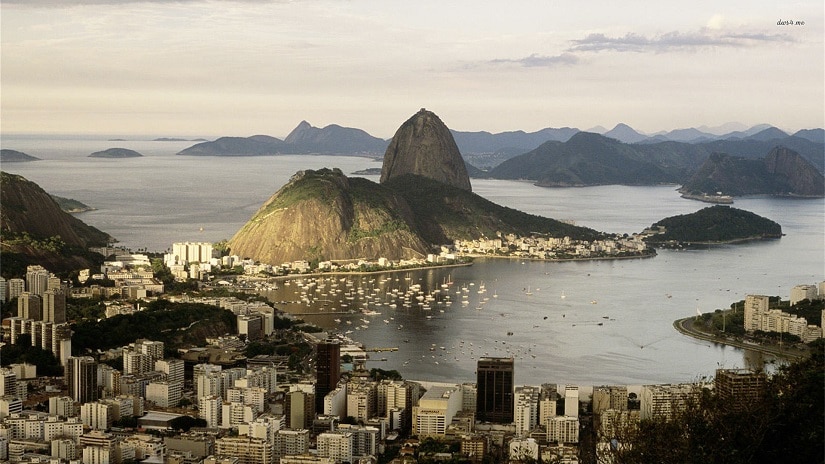 Rio de Janeiro is called ‘Cidade Maravilhosa’. Image courtesy www.amenaviajes.com[/caption] Later, in 1565, a Portuguese soldier called Estácio da Sá, sailing from the capital of Brazil Salvador, founded the city and named it São Sebastião do Rio de Janeiro. Almost two hundred years later, in 1763, it became the capital of the Portuguese colony of Brazil. On 7 March 1808, Dom João and his court landed in the city of Rio de Janeiro as Napoleon invaded Lisbon. From one day to other, Rio was invaded by around 15,000 Portuguese. In 1815, Dom João VI was crowned the King of the United Kingdom of Brazil, Portugal and Algarves, which has become an important part of the history of Rio. As the city started to grow, libraries, theatres, schools and hospitals were built, streets and roads were opened, churches were renovated. Rio with its port, commercial activities and vantage location became the business capital of this region in the 17th century. Its economy was driven by sugar, coffee and gold. Rio de Janeiro grew frantically. The new capital at the beginning of the 19th century, became the most cosmopolitan city of the continent. [caption id=“attachment_2925224” align=“alignnone” width=“825”]
Rio de Janeiro is called ‘Cidade Maravilhosa’. Image courtesy www.amenaviajes.com[/caption] Later, in 1565, a Portuguese soldier called Estácio da Sá, sailing from the capital of Brazil Salvador, founded the city and named it São Sebastião do Rio de Janeiro. Almost two hundred years later, in 1763, it became the capital of the Portuguese colony of Brazil. On 7 March 1808, Dom João and his court landed in the city of Rio de Janeiro as Napoleon invaded Lisbon. From one day to other, Rio was invaded by around 15,000 Portuguese. In 1815, Dom João VI was crowned the King of the United Kingdom of Brazil, Portugal and Algarves, which has become an important part of the history of Rio. As the city started to grow, libraries, theatres, schools and hospitals were built, streets and roads were opened, churches were renovated. Rio with its port, commercial activities and vantage location became the business capital of this region in the 17th century. Its economy was driven by sugar, coffee and gold. Rio de Janeiro grew frantically. The new capital at the beginning of the 19th century, became the most cosmopolitan city of the continent. [caption id=“attachment_2925224” align=“alignnone” width=“825”]
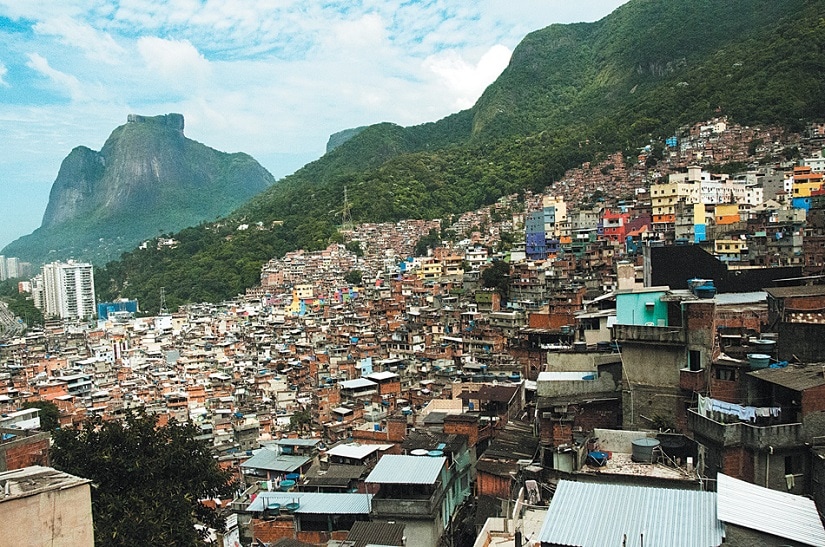 A view of the favelas. Image courtesy Walter Mesquite[/caption] Rodrigo Dias, a local historian, says that Rio used to be Portugal’s military base “but with fast economic changes and a growing population, it became the capital of Brazil”. He continues: “As Brazil was directly ruled from Portugal, Rio has imbibed Portuguese religious and artistic culture, which can be seen in some of the buildings in the city.” Following the abolition of slavery, the former slaves with no or little money started to settle in the mountains away from the city. These settlements, now known as the favelas, drew more African slaves, and these areas were initially known as the “African neighbourhoods”. As Rio grew further, more immigrants started to come to the capital in search of work. Unable to find work and affordable housing in the city, these new immigrants started to settle in the favelas. The government tried to provide housing for the people of the favelas, but for various reasons – including poor planning and discontinuation of project funds – what actually happened, was the creation of new favelas. As the favelas spread, the divide between the haves and have-nots widened. Crimes such as drug trafficking, robberies, murders, etc. became commonly associated with the favelas. Rio was growing, but its problems were growing as well. [caption id=“attachment_2925226” align=“alignnone” width=“825”]
A view of the favelas. Image courtesy Walter Mesquite[/caption] Rodrigo Dias, a local historian, says that Rio used to be Portugal’s military base “but with fast economic changes and a growing population, it became the capital of Brazil”. He continues: “As Brazil was directly ruled from Portugal, Rio has imbibed Portuguese religious and artistic culture, which can be seen in some of the buildings in the city.” Following the abolition of slavery, the former slaves with no or little money started to settle in the mountains away from the city. These settlements, now known as the favelas, drew more African slaves, and these areas were initially known as the “African neighbourhoods”. As Rio grew further, more immigrants started to come to the capital in search of work. Unable to find work and affordable housing in the city, these new immigrants started to settle in the favelas. The government tried to provide housing for the people of the favelas, but for various reasons – including poor planning and discontinuation of project funds – what actually happened, was the creation of new favelas. As the favelas spread, the divide between the haves and have-nots widened. Crimes such as drug trafficking, robberies, murders, etc. became commonly associated with the favelas. Rio was growing, but its problems were growing as well. [caption id=“attachment_2925226” align=“alignnone” width=“825”]
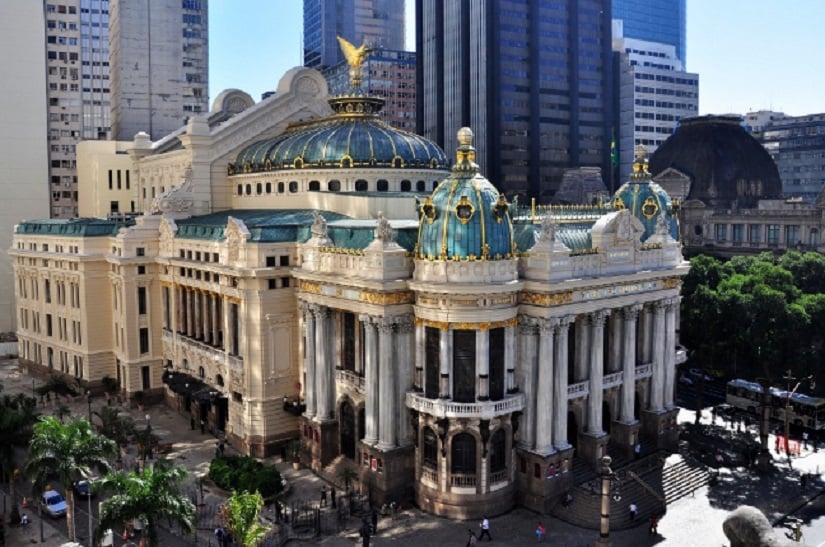 The Municipal Theater at the Rio City centre. Image courtesy Visit Rio[/caption] Gangs started to rule the favelas, and these became dangerous areas. The government, with the help of NGOs, began working on pacifying the favelas. Today, almost all of these favelas have been pacified. They have a much lower incidence of violence and crime than previously. A few of these favelas – like Alemão and Rocinha – has also become tourist attractions. Renato Silva, a capoeira teacher, lives in one of these favelas. “A long time ago, these favelas were dangerous place for people from the city to enter. There are still a few areas in the favelas that are ruled by gangs and are no-go areas…but most of them have been pacified,” he says. As part of the Rio 2016 Olympics social programmes, a budget of 8.5 billion Brazilian Reais were set aside for the ambitious favelas urbanisation project, Morar Carioca. The project has promised urbanisation of more than 700 favelas till 2020 by providing energy, water, sanitation, schools, etc. Rio’s mayor Eduardo Paes has affirmed that the project is going well and has received close to 4 billion Brazilian Reais of investment (as of 2015). “A decade ago, we did not have internet here in the favelas, and lot of houses were without energy or water. But today, a lot of the houses have all these facilities,” says Renato. [caption id=“attachment_2925232” align=“alignnone” width=“825”]
The Municipal Theater at the Rio City centre. Image courtesy Visit Rio[/caption] Gangs started to rule the favelas, and these became dangerous areas. The government, with the help of NGOs, began working on pacifying the favelas. Today, almost all of these favelas have been pacified. They have a much lower incidence of violence and crime than previously. A few of these favelas – like Alemão and Rocinha – has also become tourist attractions. Renato Silva, a capoeira teacher, lives in one of these favelas. “A long time ago, these favelas were dangerous place for people from the city to enter. There are still a few areas in the favelas that are ruled by gangs and are no-go areas…but most of them have been pacified,” he says. As part of the Rio 2016 Olympics social programmes, a budget of 8.5 billion Brazilian Reais were set aside for the ambitious favelas urbanisation project, Morar Carioca. The project has promised urbanisation of more than 700 favelas till 2020 by providing energy, water, sanitation, schools, etc. Rio’s mayor Eduardo Paes has affirmed that the project is going well and has received close to 4 billion Brazilian Reais of investment (as of 2015). “A decade ago, we did not have internet here in the favelas, and lot of houses were without energy or water. But today, a lot of the houses have all these facilities,” says Renato. [caption id=“attachment_2925232” align=“alignnone” width=“825”]
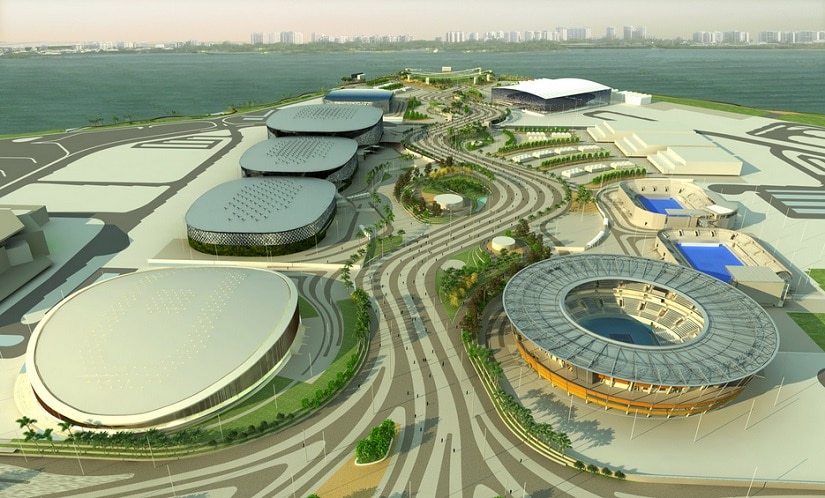 The 2016 Olympics Park. Image courtesy Starrcards[/caption] On 2 October 2009, as millions of people crowded the Copacabana beach to see the live coverage of the Olympics bidding results, Rio was declared the winner and host of the 2016 Olympics. Brazil exploded in joy as the dream became reality. Rio fought against powerful contenders like Chicago, Madrid and Tokyo and emerged as the winner. Rio de Janeiro planned to organise the games at the cost of USD 14.4 billion. With a spend of 40 billion Brazilian Reais, as we look at it optimistically the 2016 Olympics will give the city new and improved infrastructure, social projects, subways, airports, transportation, sports venues, etc. The ‘cariocas’ (a noun used to refer to anything connected to the city of Rio de Janeiro) had a reason to celebrate when Rio was chosen as the host city of 2016 Olympics. Marcela Marreti, a volunteer for the Olympic Games, has recently moved out of the favelas to live in an apartment near Copacabana beach. She says, “The Olympics have given a lot for cariocas, especially infrastructure and opportunities. A lot of my friends who were unemployed earlier, managed to find jobs in different projects related to the Olympics. I really feel happy to be part of all this.” The 2016 Rio Olympic Games, apart from the specially constructed Barra Olympics Park, will take place at other famous venues like Maracana Stadium, Guanabara bay, Copacabana beach, Sambadrome, etc. Football games will take place in other cities like Brasilia, Sao Paulo, Salvador, Belo Horizonte and Manaus as well. After the Olympics and Paralympic Games, Brazil has plans to convert the Barra Olympic Park into public schools, social project areas, high-performance sports centres and public leisure areas. The 2016 Rio Olympics will certainly leave a valuable infrastructural, educational, social and sporting legacy to the cariocas. The writer is a business consultant and freelance journalist, who has been living in Brazil since 2008
The 2016 Olympics Park. Image courtesy Starrcards[/caption] On 2 October 2009, as millions of people crowded the Copacabana beach to see the live coverage of the Olympics bidding results, Rio was declared the winner and host of the 2016 Olympics. Brazil exploded in joy as the dream became reality. Rio fought against powerful contenders like Chicago, Madrid and Tokyo and emerged as the winner. Rio de Janeiro planned to organise the games at the cost of USD 14.4 billion. With a spend of 40 billion Brazilian Reais, as we look at it optimistically the 2016 Olympics will give the city new and improved infrastructure, social projects, subways, airports, transportation, sports venues, etc. The ‘cariocas’ (a noun used to refer to anything connected to the city of Rio de Janeiro) had a reason to celebrate when Rio was chosen as the host city of 2016 Olympics. Marcela Marreti, a volunteer for the Olympic Games, has recently moved out of the favelas to live in an apartment near Copacabana beach. She says, “The Olympics have given a lot for cariocas, especially infrastructure and opportunities. A lot of my friends who were unemployed earlier, managed to find jobs in different projects related to the Olympics. I really feel happy to be part of all this.” The 2016 Rio Olympic Games, apart from the specially constructed Barra Olympics Park, will take place at other famous venues like Maracana Stadium, Guanabara bay, Copacabana beach, Sambadrome, etc. Football games will take place in other cities like Brasilia, Sao Paulo, Salvador, Belo Horizonte and Manaus as well. After the Olympics and Paralympic Games, Brazil has plans to convert the Barra Olympic Park into public schools, social project areas, high-performance sports centres and public leisure areas. The 2016 Rio Olympics will certainly leave a valuable infrastructural, educational, social and sporting legacy to the cariocas. The writer is a business consultant and freelance journalist, who has been living in Brazil since 2008
Rio 2016: Before the Summer Olympics, get to know the 'Cidade Maravilhosa' of Brazil
Aravind Krishnan
• August 3, 2016, 15:36:06 IST
Famous for its samba, football, beaches and now for the Olympics, Rio de Janeiro is known as the ‘Cidade Maravilhosa’ i.e. marvellous city
Advertisement
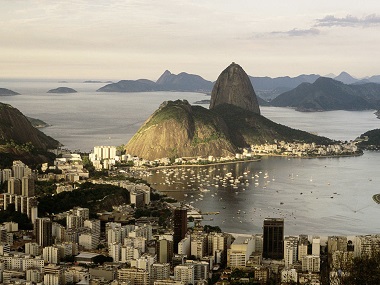)
End of Article